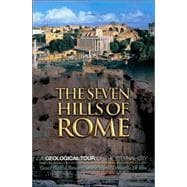
What is included with this book?
| Foreword, by Walter Veltroni | vii | ||||
| Preface | ix | ||||
| CHAPTER 1 A Tourist's Introduction to the Geology of Rome | 1 | (26) | |||
|
18 | (9) | |||
| CHAPTER 2 Center of the Western World | |||||
|
27 | (10) | |||
| CHAPTER 3 Palaces and Gardens | |||||
|
37 | (14) | |||
| CHAPTER 4 The Aventine (Aventino) Hill | 51 | (8) | |||
| CHAPTER 5 The Tiber Floodplain, Commerce, and Tragedy | 59 | (26) | |||
| CHAPTER 6 The Tiber's Tributaries in Rome | |||||
|
85 | (25) | |||
| CHAPTER 7 The Western Heights | |||||
|
110 | (13) | |||
| CHAPTER 8 The Celian (Celio) Hill | 123 | (30) | |||
| CHAPTER 9 Largest of the Seven Hills | |||||
|
153 | (9) | |||
| CHAPTER 10 Upper Class | |||||
|
162 | (12) | |||
| CHAPTER 11 Field Trips in and around Rome | 174 | (55) | |||
|
174 | (21) | |||
|
195 | (21) | |||
|
216 | (13) | |||
| Acknowledgments | 229 | (2) | |||
| Further Reading | 231 | (6) | |||
| Index | 237 |
The New copy of this book will include any supplemental materials advertised. Please check the title of the book to determine if it should include any access cards, study guides, lab manuals, CDs, etc.
The Used, Rental and eBook copies of this book are not guaranteed to include any supplemental materials. Typically, only the book itself is included. This is true even if the title states it includes any access cards, study guides, lab manuals, CDs, etc.